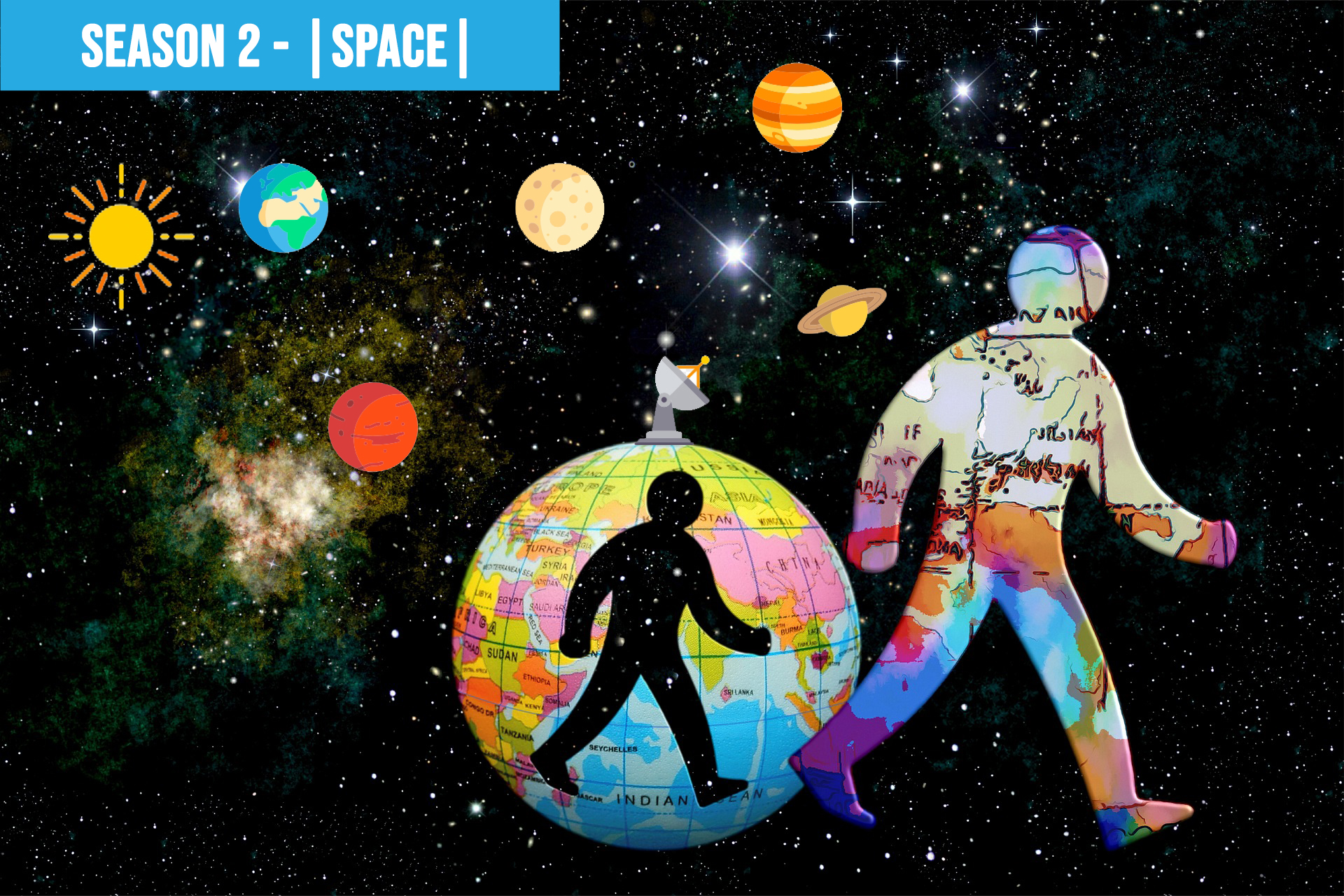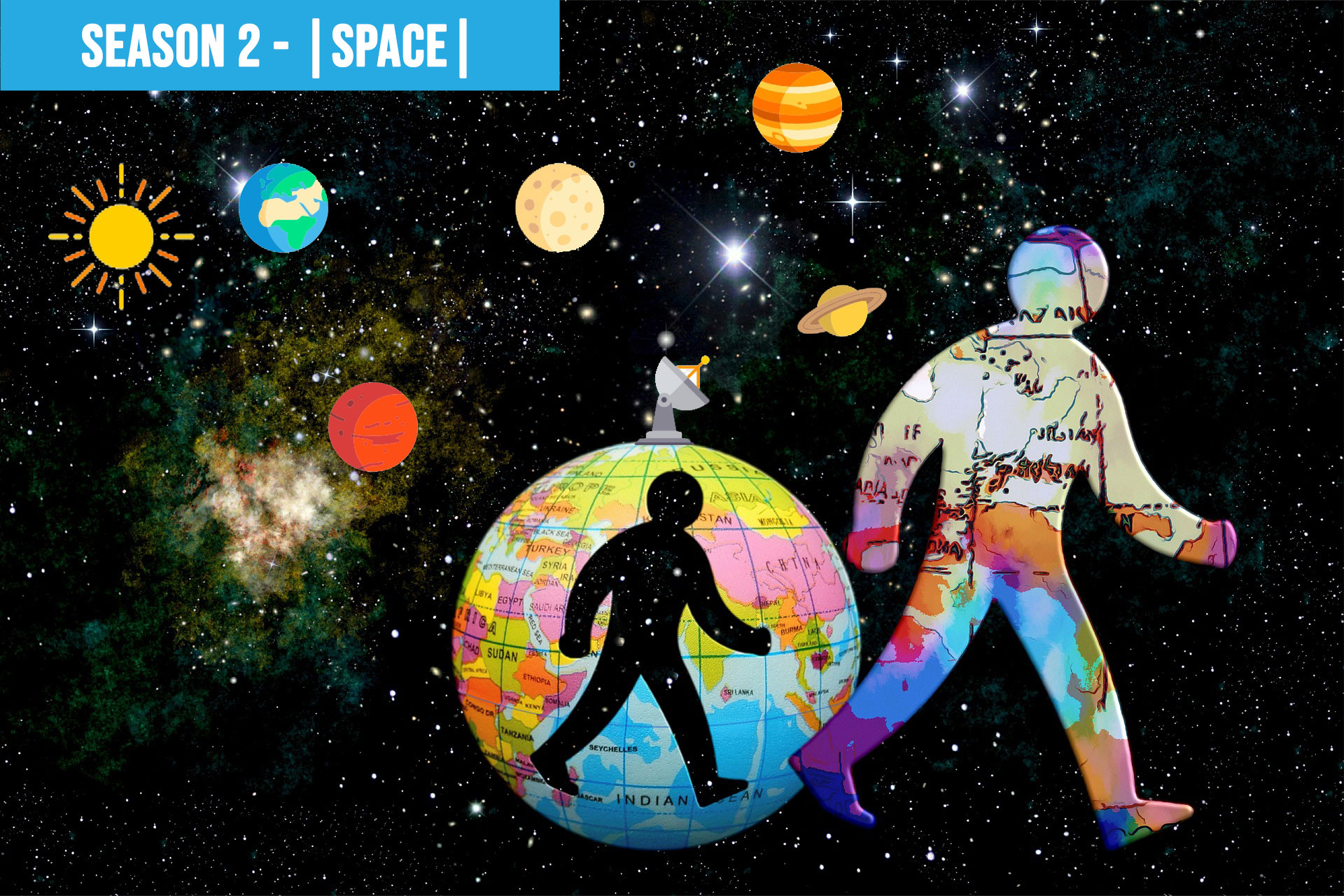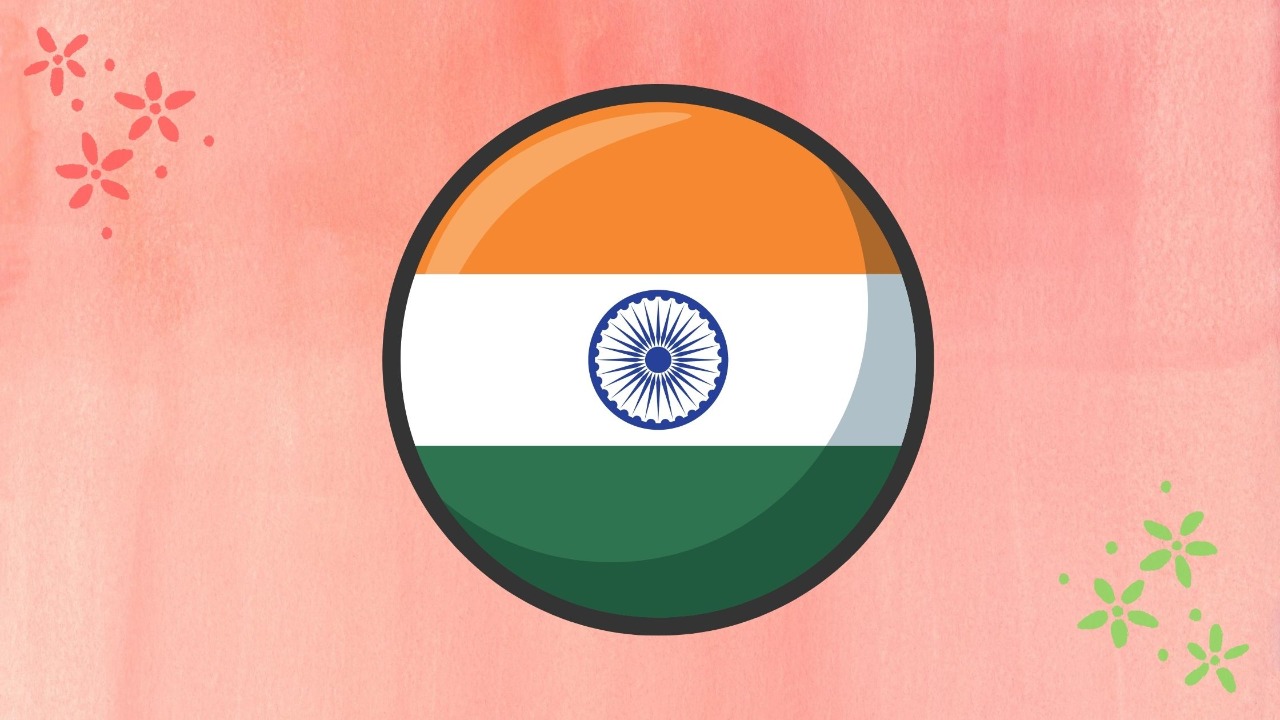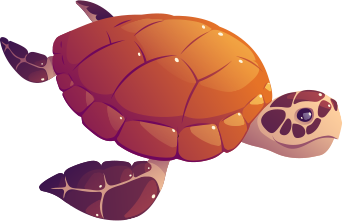UNIVERSE AND BLACKHOLES – PART2
[0.01] {Background Music}
[0.08] Siyona: Hello all. That was a short break, right? Our days seem to wiz past. But I think even this episode would wiz past. Welcome to my podcast Little Mind Chats. Minds are little, not our thoughts. This episode is a continuation of our discussion with Dr. Madhusudan about the Universe and Blackholes. Hope you had a chance to listen to the previous episode. Hey you let’s get on with the episode! Okay, let’s jump straight in, to know more about the ever-interesting Black holes.
[0.44] Siyona: Dr. Madhusudan, “what makes the universe so colourful in some places? It looks like someone has painted it with very beautiful colours.”
[0.55] Dr. Madhusudan: Can you give me a couple of examples where you have seen a colourful universe?
[0.59] Siyona: For example, you know when these documentaries and all, they take pictures from a telescope. And they show like purple and pink and orange scattered all over the universe.
[1.14] Dr. Madhusudan: Okay. So, there are two ways in which I can answer this question. Number one, colour is a very, very personal experience. Okay? So, colour by itself does not exist. Colour exists in your brain. Let me clarify that a little bit. You know that in our eye we have three kinds of cells called the cone cells and these are responsible for our colour vision. One kind of cone cells are responsible for sensing blue light, and another set of cone cells for green and the third set for red. So, you have is red, green and blue. For some reason let us say that I have lost the blue cone cells. Then, if you show me a coloured object, the colour that I see and the colour that you see would be very, very different. And it is impossible to say who is seeing the real colour. So, when it comes to colour, there is nothing like a real colour it depends on how our eye functions. For example, the sky that we see and the sky that honeybee would see would be very, very different. In fact, to a honeybee, the sky looks completely purplish and violet. It is washed with violet. There is hardly any red colour that honeybee would be seeing. Okay? So, one part of colour sensation is very, very personal. It is something to do with our eye, with our brain. So, colour does not exist in the object. It exists in our brain.
[3.05] Dr. Madhusudan: The second answer that I would like to give you is that, objects especially when they emit light, they emit light which is possibly a mixture of different light of different energy. And light of different energies will correspond to light of different colours. All the colours or pictures that you have seen in the planetarium shows, tell you that those objects were actually emitting light of different energy and these energies of different kind appear to us as different colours. Okay?
[3.48] Siyona: Okay. I know this is not related to the topic. But, how come bees see the sky washed with violet?
[3.57] Dr. Madhusudan: Like I told you, our eye has these different types of cone cells and these cells actually are responsible for absorbing light and then sending that information to brain and the brain says, this is blue, this is green, this is red and so on. In the case of honey bees they have cone cells which can only tell whether light is violet or ultra violet. It is sensitive to that. But it is not sensitive to red at all. Therefore, you show any coloured object to a honeybee, if it contains red, that red will not be seen by honey bee at all.
[4.43] Siyona: Also, it thinks it will be just invisible.
[4.46] Dr. Madhusudan: No. The object would be visible but then the colour information will be missing.
[4.51] Siyona: Or it just be black.
[4.53] Dr. Madhusudan: Yeah. In fact, I can tell you a small activity to do after this session is over. You can go to a search engine and then type “flowers as seen by honeybee”. Okay. “Flowers as seen by honey bee and then you go to the “images”. You will find some fantastic pictures where the same flower as by human beings and as seen by honey bees are shown and are different. They are so different. And that is because the cone cells of honey bees are designed differently from the cone cells of human beings.
[5.36] Siyona: Oooooooo.
[5.37] Dr. Madhusudan: Okay? You can find it.
[5.38] Siyona: That is interesting. I will try. Definitely I will. “I’ve heard Black Holes gobble up everything that’s near it. How does it decide what is near it and what isn’t?”
[5.53] Dr. Madhusudan: It doesn’t decide like we decide, human beings. You ask me a question now I’m right now deciding what should I answer. What are things I should say, what are things I should not say. And what things would be appropriate or something that an eight-year-old might understand. So, I am making a decision. Right?
[6.18] Siyona: Yeah.
[6.19] Dr. Madhusudan: A Black Hole does not decide like that. So, a black hole is just a region. It’s a region in space and its main property is it exerts gravitational influence on all objects. And as you know when the objects are very close, this gravitational influence is very strong and they will be slowly sucked up towards the black hole. And as you come closer and closer, they get sucked up faster and faster. So, there is nothing like a decision, it is just that the gravitational influence is very, very strong.
[7.02] Siyona: Ohhhhh. Yeah and also another time, when I was watching the videos, it’s said that if your friend was too falling in to a black hole, all you would see him is, you would just see him fall in slow motion, freeze and then fade away.
[7.23] Dr. Madhusudan: Yeah. Oh. What you say is absolutely right. He fades away because when he enters a certain, when he is at a certain distance, he or she is at a certain distance from the black hole, what we call the edge of the black hole or the… there is a scientific name. you don’t have to remember but anyway I will tell you. This called a “Event Horizon”. Okay? Yeah, it is like having a fence around your property. You have a house; you want to say what part of the land belongs to you and you put a fence there. “Don’t You?”
[8.02] Siyona: Yeah.
[8.03] Dr. Madhusudan: Or you build a compound. Or you have a compound. Similarly, a blackhole also has a compound built using gravity. And anything that goes inside that compound will never ever come back. So, it’s like a one-way street. You can go into the black hole but you cannot come out.
[8.26] Siyona: Okay.
[8.27] Dr. Madhusudan: So, your friend, I wish no friend of yours should face this problem that somebody who is placed near the black hole and he crosses that fence then light from that place will not be reaching you. So, you don’t know what happened to him or her. So, that is when you say that he has faded out.
[8.50] Siyona: Oh…
[8.51] Dr. Madhusudan: And we don’t even know what has happened to him. Okay?
[8.56] Siyona: Okay.
[8.57] Dr. Madhusudan: But before that what you will observe? Another description I will add to what you have beautifully put. He gets fetched up as he goes closer and closer to the black hole. And he becomes thin, thinner and thinner and longer and longer and he becomes something like the noodles that you are fond of. Okay? A thin…, In fact astronomers have a beautiful name for this phenomenon. It’s called spaghettification.
[9.27] Siyona: Yeah. They’ve even mentioned that.
[9.29] Dr. Madhusudan: People or objects or anything that ventures very close to the black hole, will be simply stretched thin and long like a spaghetti. It’s called spaghettification. So, that is another effect that you will see.
[9.43] Siyona: Yeah and then also it’s showed that he got stretched out so much his eyes and ears and nose shrink, fell apart and then they flew away.
[9.54] Dr. Madhusudan: Long before that he would have ceased to exist. Long before that. Because these forces actually will be so harsh that heart stops beating long before he is stretched to that point.
[10.08] Siyona: Huh…. (In surprise) oh. Oh. That sounds terrible.
[10.13] Dr. Madhusudan: Yeah. It is terrible.
[10.16] Siyona: And also, when you enter a back hole and you go inside it, they show that there’s this tiny little hole and then you get squeezed into it.
[10.27] Dr. Madhusudan: we really exactly do not know what is inside that, inside the black hole. Because all that we get information is from outside the black hole. No. I told you about this event horizon?
[10.40] Siyona: Yeah.
[10.41] Dr. Madhusudan: You know the meaning of horizon, right?
[10.44] Siyona: Yeah.
[10.45] Dr. Madhusudan: Horizon, say on the earth it is the most distant point that you can see.
[10.51] Siyona: Okay.
[10.52] Dr. Madhusudan: And anything below the horizon you can not see. Okay? So, when the sun the sun is not actually setting. It has gone below the horizon from your place. It looks likes the sun has set. So, horizon actually tells you how far you can see.
[11.10] Siyona: Okay.
[11.11] Dr. Madhusudan: In the same sense, black hole also has a horizon. But the interesting thing is beyond this horizon you can not see anything that happens in the black hole. You can see only things that are happening outside the horizon. Okay?
[11.28] Siyona: Oh.
[11.29] Dr. Madhusudan: Yeah. Not directly at least.
[11.34] Siyona: Okay.
[11.35] Dr. Madhusudan: Mmm.
[11.36] Siyona: “What is at the centre of our galaxy?”
[11.40] Dr. Madhusudan: What is at the centre of our galaxy? See this is a difficult question again. For one thing it is very hard for us to see the centre of our galaxy by being inside the galaxy ourselves. Okay? What we have found out is the following:
We have looked at the centres of different galaxies. That we can see because we are all out side our galaxy. So, we can observe them. Most of the galaxies that we have seen, they have a gigantic black hole sitting at the centre. These are called super massive black holes. There are two kinds of black holes actually. Depending on how they are formed. One type of black holes they come from the end stages of very, very massive stars. I told you about nebulae being blown away by them and…
[12.40] Siyona: Yeah.
[12.41] Dr. Madhusudan: And if the star is massive enough, then the central part of the star can become a black hole. Okay?
[12.47] Siyona: Okay.
[12.48] Dr. Madhusudan: Now, those are called stellar black holes because they are formed from stars. Stellar means something related to a star, stellar black holes. We also have super massive black holes which are something like stellar black holes, black holes which are formed out of the end stages of a star typically have the mass which are about 10 times the mass of the sun, or 20 times of the mass of the sun you know of that order. Okay?
[13.22] Siyona: Oh. Okay.
[13.24] Dr. Madhusudan: Super massive black holes, you simply can not compare their mass. Super massive black holes have something like mass equivalent of a million suns. Million times the mass of our sun.
[13.41] Siyona: A million?
[13.43] Dr. Madhusudan: A million is so huge. It’s even difficult to imagine how big it is. So, most of the galaxies have this photo massive black holes at the centre. By looking at these, we can also come to a conclusion that perhaps our galaxy also has a black hole at the centre. You know it is like this. Suppose you go on a drive in country side, then on the one side of the highway, you find lush green field and you see lots of sheep grazing there. And you find that all the sheep are black in colour there. They could be of any colour. I am just taking randomly some colour there. You find that all sheep are of one colour. What do you conclude from that? One way of concluding is that may be in this particular part of country side all sheep are of the same colour. Okay
[14.45] Siyona: Mmmmhhmm.
[14.47] Dr. Madhusudan: It’s perfect to that conclusion because I have not seen sheep of any other colour. So, I think that this particular village or country side has just the sheep made of one colour. But who knows if you probe more deeply, if you go around the country side and check all the sheep, you may find sheep of different colour. In astronomy what we do is, we can only say and conclude from what we observe. Most of the galaxies we have seen have black hole, super massive black hole at the centre. Why not our galaxy too? Okay? Now we have to come up with a way of showing that our galaxy really has or does not have super massive black holes.
[15.38] Siyona: To me the galaxy looks like a big, big ginormous lollipop. But its like licking the lollipop and then suddenly finding the centre just sticks to your tongue and never comes off.
[15.52] Dr. Madhusudan: (laughs)
[15.53] Siyona: Which is practically a black hole.
[15.56] Dr. Madhusudan: Yeah. A super massive one.
[15.58] Siyona: Yeah, a super massive call.
[16.02] Dr. Madhusudan: Mmm.
[16.04] Siyona: Now friends, didn’t you love the interview? I feel I have learnt so much more. I will take my parents help to listen to this episode again to gain more understanding. It fascinates me who paints the universe like that. But then he answered it. He cleared my doubt.
[16.27] Siyona: Thank you so much for coming to my show Dr. Madhusudan. You’ve awakened a different dimension of the universe for smaller minds like ours.
[16.36] Dr. Madhusudan: Yeah. I should actually thank you for giving me this opportunity to talk to you all and I will be more than, more than happy to be clarifying your doubts or answering your questions should you have any? Please feel free to get back to me at any point of time. I will be there to help you with answers. If I know the answer to your question. Meanwhile I wish you all of you “All the Best” and have a wonderful journey into the universe in the coming time. Thank you.
[17.10] Siyona: Thank you. I really hope you; my listener friends enjoyed this episode. Like Dr. Madhusudan suggested, please do not hesitate to get in touch if you have some more questions for him. He’s kind enough to answer them for you. Also, I did search for the ‘flowers as seen by Honey bees’ and was truly fascinated with how honey bees see our world! I hope you’ll look for it too!
[17.39] Siyona: Hhmm… What else is coming up? Only two more days to go for your monthly competition submissions. I’ve already started receiving many inspiringly grown greens. Guess what? We have a lovely judge to make a decision for us. Her name is Milly. Do visit my Instagram page to see her. She lives in the UK and kindly agreed to be our judge as she loves to encourage kids like us to grow our own food. Stay tuned to know more about her and the results this Sunday, 30th August.
[18.15] Siyona: Until then stay safe. Thanks a ton for listening! Bye!










